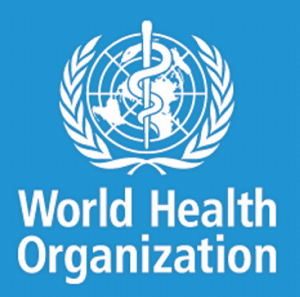Young adults at risk of hearing loss – WHO
 The World Health Organisation (WHO) warns that some 1.1 billion teenagers and young adults are at risk of hearing loss due to the unsafe use of personal audio devices, including smartphones.
The World Health Organisation (WHO) warns that some 1.1 billion teenagers and young adults are at risk of hearing loss due to the unsafe use of personal audio devices, including smartphones.
This also includes exposure to damaging levels of sound at noisy entertainment venues such as nightclubs, bars and sporting event.
The WHO study, which was made available to the Ghana News Agency on Monday, said hearing loss had potentially devastating consequences for physical and mental health, education and employment.
Data from studies in middle and high-income countries analysed by WHO indicate that among teenagers and young adults aged 12-35 years, nearly 50 per cent were exposed to unsafe levels of sound from the use of personal audio devices and around 40 per cent are exposed to potentially damaging levels of sound at entertainment venues.
It said unsafe levels of sounds could be, for example, exposure to in excess of 85 decibels (dB) for eight hours or 100 dB for 15 minutes.
“As they go about their daily lives doing what they enjoy, more and more young people are placing themselves at risk of hearing loss,” said Dr Etienne Krug, WHO Director for the Department for Management of Noncommunicable Diseases, Disability, Violence and Injury Prevention.
“They should be aware that once you lose your hearing, it won’t come back. Taking simple preventive actions will allow people to continue to enjoy themselves without putting their hearing at risk,” he said.
The study indicated that safe listening depended on the intensity or loudness of sound, and the duration and frequency of listening.
It said exposure to loud sounds could result in temporary hearing loss or tinnitus which is a ringing sensation in the ear.
It said when the exposure is particularly loud, regular or prolonged, it could lead to permanent damage of the ear’s sensory cells, resulting in irreversible hearing loss.
WHO recommends that the highest permissible level of noise exposure in the workplace is 85 dB up to a maximum of eight hours per day.
According to the study many patrons of nightclubs, bars and sporting events were often exposed to even higher levels of sound, and should, therefore, considerably reduce the duration of exposure; for example, exposure to noise levels of 100 dB, which was typical in such venues, is safe for no more than 15 minutes.
It said teenagers and young people could better protect their hearing by keeping the volume down on personal audio devices, wearing earplugs when visiting noisy venues, and using carefully fitted, and, if possible, noise-cancelling earphones/headphones.
It said they could also limit the time spent engaged in noisy activities by taking short listening breaks and restricting the daily use of personal audio devices to less than one hour.
The study said with the help of smartphone apps, they could monitor safe listening levels. In addition they should heed the warning signs of hearing loss and get regular hearing check-ups.
It said governments also had a role to play by developing and enforcing strict legislation on recreational noise, and by raising awareness of the risks of hearing loss through public information campaigns.
It noted that parents, teachers and physicians can educate young people about safe listening, while managers of entertainment venues could respect the safe noise levels set by their respective venues, use sound limiters, and offer earplugs and “chill out” rooms to patrons.
The study said manufacturers could design personal audio devices with safety features and display information about safe listening on products and packaging.
To mark International Ear Care Day, celebrated each year on March 3rd, WHO is launching the “Make Listening Safe” initiative to draw attention to the dangers of unsafe listening and promote safer practices.
Source: GNA
